Meet the course manager: Chris Marker
Related Articles
Marker, from Waterlooville Golf Club, details how the last 18 months has changed the golf club, and he takes us through the grass seed he uses to ensure the venue looks and plays as best as possible.
Waterlooville Golf Club near Portsmouth in Hampshire was founded in 1907 and the current course, which in recent years the club has invested heavily in, was designed by the great Sir Henry Cotton.
We speak to its course manager, Chris Marker, about how he and his team maintain the venue.
How did you end up as the course manager at Waterlooville Golf Club?
I started at Petersfield Golf Club on July 14, 2003 (my 16th birthday). My stepfather, Phil Bennett, was the course manager at the time, and in all honesty I think my mum probably made him give me the job. I started my L2 sports turf at Sparsholt College in 2004. I then took up the head groundsman role at Brook Cricket Club in March 2006, who were in the Surrey first division at the time, as a second job. Also, in 2006 I was promoted to first assistant at the 18 hole course. In 2009 I started my L3 sports turf award at Merrist Wood College. In 2011 I was asked to run the 12 hole pay and play at South Petersfield. It was the first time it had been run separately, which was a great step up and a very valuable experience from which I learnt a lot. In 2015 I got a call to go and speak to Waterlooville Golf Club about the course manager’s job. Thankfully, I was offered the job and after nearly six years I can safely say it was the best decision I have ever made. I look after every aspect of the golf course and have even been lucky enough to oversee some big projects which have been a great success and fantastic experience.
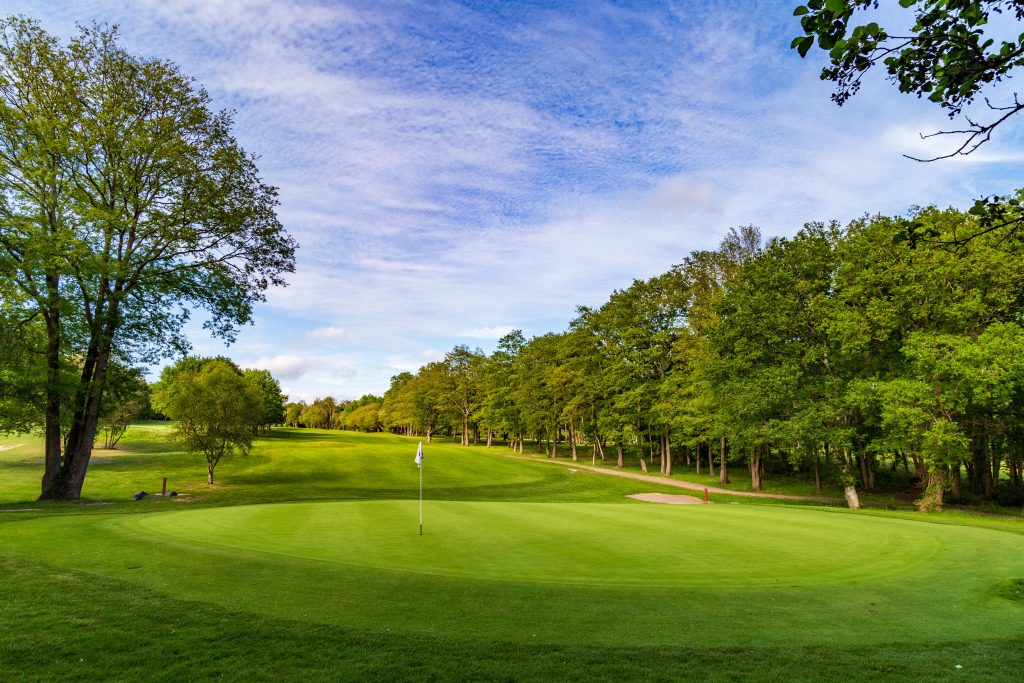
What is the overall size of your team?
Currently I have five qualified greenkeepers, a part-time mechanic, one apprentice and two guys who are part of the kick-start government scheme.
I am very blessed to have a vast amount and range of experience within the team with a couple of enthusiastic guys that are new to the team.
The team dynamic is great, I like to think everybody looks out for one another. We have a weekly meeting in which the general objectives for the week are given out. The fixtures are discussed and honest feedback on the previous week including what went well and what could have gone better. I have a daily task board that usually goes up after lunch for the following day which helps everyone know what they’re doing and allows them to set the relevant machines up for the following day.
What were your experiences during the lockdowns?
Lockdown one came the day after we started our spring maintenance. We furloughed all our staff apart from myself and the deputy. Obviously, it took us a bit longer than normal to then complete the maintenance, however we did manage to get in a further 20t of sand as growth was slow and we didn’t have to worry about the playing surface at all. It was a totally different way of greenkeeping and took a little getting used to as we were able to do work to the greens and tees and just leave them instead of worrying about their recovery time. It also gave us time to change the shape of all the fairways and aprons and grow some long rough in a few areas, which was a slightly controversial change. It was a very worrying time for everyone, but I was extremely thankful that I could still work and be outside all day and get out and be a greenkeeper again.
Lockdown two we kept all staff in work rather than furloughing anyone and managed to drain a green and just continue with clearing the millions of leaves we have every year.
Lockdown three we furloughed everybody except myself and the deputy again and kept busy by building temporary mats and practice nets as well as the general maintenance of the golf course.
I think the main downsides to the lockdowns were that we felt a little under pressure to present a perfect course once we re-opened, even with only two people for most of them. The idea that the course had a rest was true to some extent, but you cannot make seed germinate and grass grow if the conditions are not right. After a very dry, cold start to 2020 grass coverage was hard to come by even after a couple of months with no play.
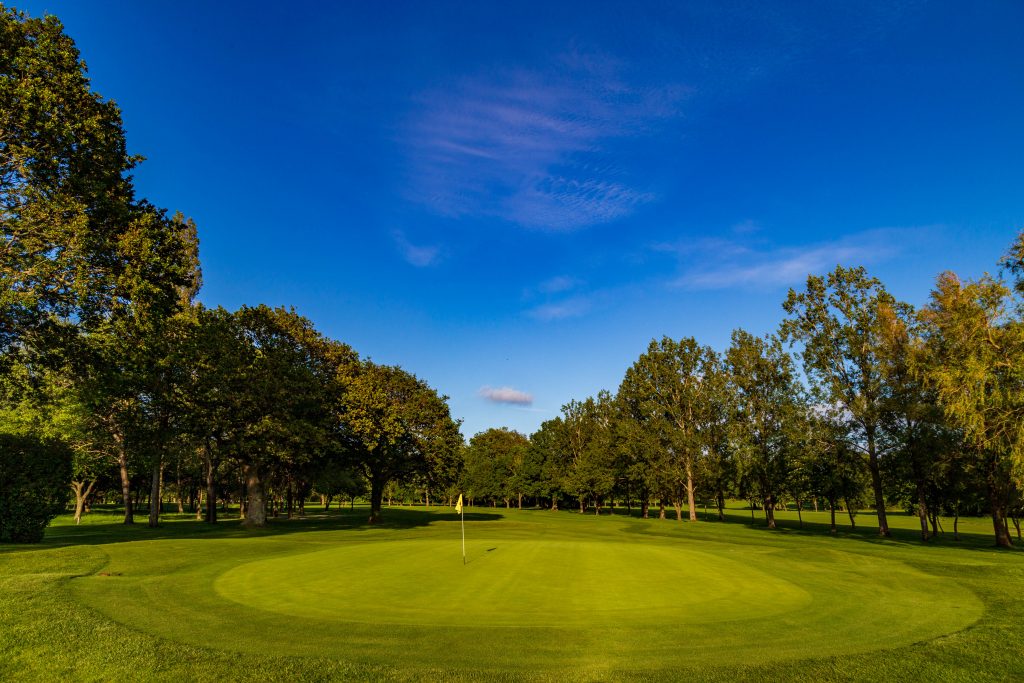
What growth has the club seen since reopening?
Golf has taken a considerable upturn since the pandemic hit; we had one of our best renewals in July 2020. Since we reopened the course after lockdown one to now we have had 210 new members which equates to an overall growth of just over 20 percent. We are five members away from being completely full with a waiting list of 47 people. We have directly benefited as we now have a waiting list for the first time in many years. The future looks positive as it has brought a lot of newcomers to the sport, and it will hopefully allow us to invest in the course and keep all our members happy for years to come.
Can you tell us about the complete bunker renovation you’ve undertaken?
We completed the last phase of our course improvement plan at the end of 2020. We had a new irrigation system installed, extensive drainage work and 25 bunkers fully renovated. All the work was completed successfully however I think the bunkers have been the most noticed by our members.
Our previous bunkers were just dug into the ground with no liners, poor drainage, contaminated sand and very inconsistent play. They would increase in size year after year and offered very little to the aesthetics of the course.
We had Durabunker come in to design and install 25 new bunkers with new drainage, rubber crumb liners and Durabunker edging. We went with this combination as they are fully sealed, meaning zero contamination with soil or stones. They have reduced maintenance time and cost considerably, as they never puddle and we get next to no wash, even after very heavy rain. Aesthetically they have improved the course and even transformed some holes completely. We have had extremely positive comments from members and visitors since completing the work.
What technology do you currently use to help you in your role as a course manager and how are you looking to expand and use technology as you move forward?
This year has probably been the most productive year for introducing technology. We have started to use TurfKeeper over the last few months which is a software by which you can track vast amounts of data like budgets, machines, jobs, costs, holidays and so on. It allows me to cast a job board to a TV in the workshop with machines, direction of cut, fixtures and so on. It does need a lot of data input, to use it to its full potential, but it is time well spent as the information you can get out of it is great for communicating with the membership and committees or help with justification on matters such as employing more staff or purchasing specific machinery.
We have also installed a weather station for site specific weather records. This is helpful for making decisions out on the course and building historical data for report writing.
We have also purchased a moisture probe recently and have already seen the benefit in reducing the water output. It has allowed us to create a tailored programme on our irrigation system and has therefore significantly reduced water wastage.

What Rigby Taylor grass seed do you use on the course and over greens, tees fairways? Why do you choose these and what results do you get?
I have used Rigby Taylor seed right from the start of my career at Brook Cricket Club where I used R9 which is a dwarf rye. I have used this on tees and approaches along with R25 which is a four-way rye with tetraploid, at different times of the year.
I’ve used Super Root which is a rye, fescue mix on fairways and areas of semi with great success over the last few years. I usually overseed with Rigby’s R105 on the greens at least once a year.
This year was the first year we have trialled wildflower areas with a few different Euroflor seed mixes that are part of the project pollin-8 range.
This was done to assist our bees in producing honey and one area of our ecology programme that we are very keen to implement.
Project pollin-8 is part of a major initiative to reverse the national decline in pollinating insects and a big part of our drive to increase the diversity of life both in and around the golf course.
What nutrition programme do you run across the course? Do you use liquid fertilisers?
I mainly use liquid fertilisers through the summer months and a granular in and around course maintenance weeks. Early in the season I will use some soluble fertilisers to kick start the plant’s growth. I use a lot of plant health products like sugars, seaweed, aminos, and trace elements. I also use some products with microbes to help thatch breakdown and convert nutrients.
Which if any turf diseases are a problem to the course and how are you dealing with them?
We get the usual fusarium outbreaks and anthracnose seems to be becoming more prevalent over the last few years. We just try to keep the plant as healthy as possible and try not to over or under feed. We do use fungicides during times of high stress on our greens mainly in late autumn to try and minimise scarring going into winter.
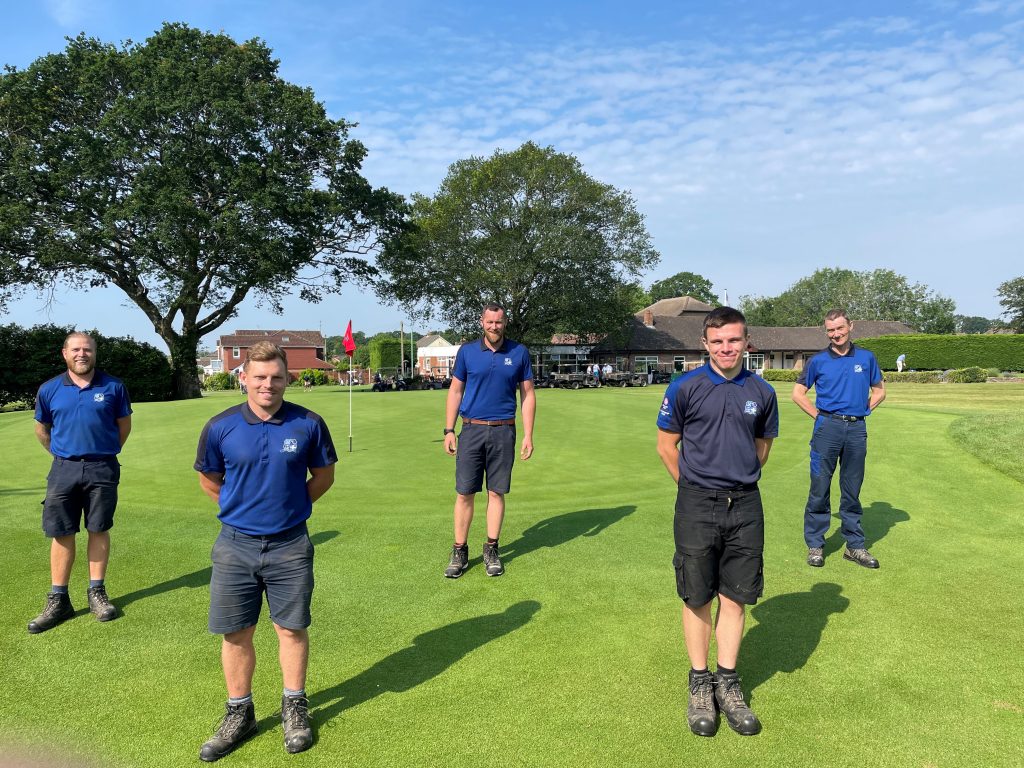
What do you require from a supplying company such as Rigby Taylor? Do you get a good level of service and how does this benefit you, members of your team, and the end product (the course)?
All the companies I deal with provide a great service with good products. I think honesty when talking about their products and having a good understanding of our role is vital. All of the people I deal with are knowledgeable people with hands-on experience of our job. This all helps to get the right products at the right times which does have a direct impact on the course.
What machinery fleet are you currently using and what piece of kit impresses you and why?
We mostly have Toro machinery. We invested in quite a few new machines a few years ago with a look to replace all of the fleet in 2024. I must say the ProCore 648 has been a fantastic addition as we can now tine a lot more in all weathers. We bought a new Toro Multi Pro sprayer which was a big upgrade from our previous sprayer and allows us to be more accurate and quicker at doing the jobs.
What height of cut are you using across the course?
Greens are between 3-6mm; Tees and aprons 7-12mm; Fairways 15-20mm; Semi rough 43mm; Rough 56mm.
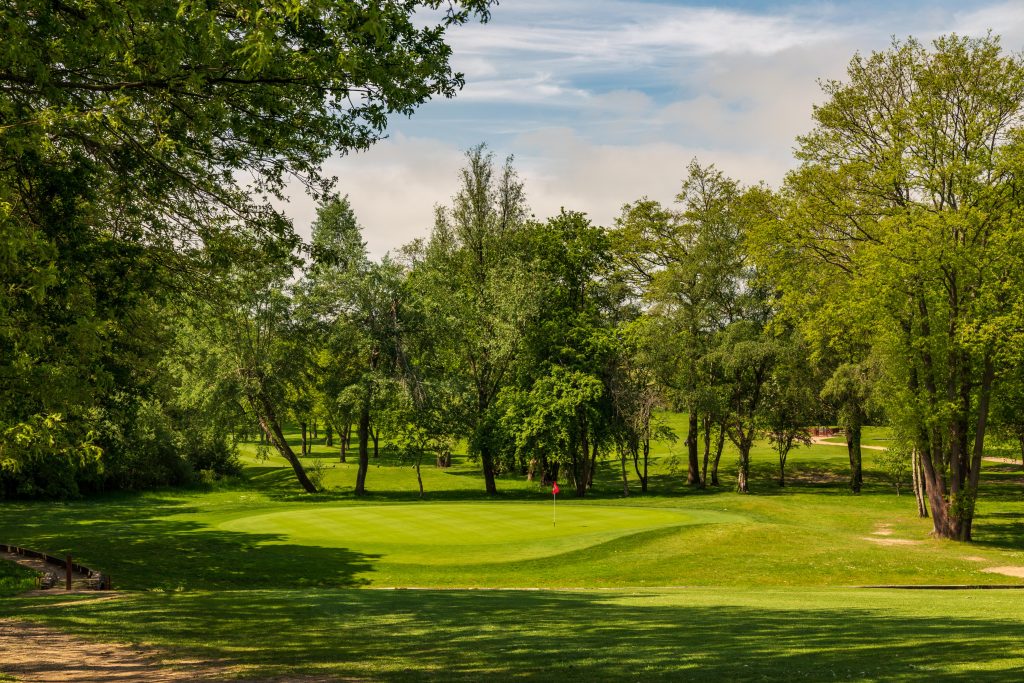
What do you think are the strengths that have carried you through your career and current position at Waterlooville?
I think once I had been in this career for a few years I had a clear vision that I wanted to become a course manager. I believe it really helps you to succeed when you have a clear direction from a young age and it gives you something to strive for. I like to think I am hardworking and taking over at Brook at a young age really helped develop my confidence and prove to myself that I was capable. I have always tried to push myself out of my comfort zone which is when you grow the most. I believe I’m a good people person which helps to build a good team around you and build a strong relationship with the team members. This, I think, had a positive outcome in getting all three projects over the line as the membership put their trust in me and my team by voting in favour of them all.
The course has a significant population of trees. What issues does this present and what management programme do you operate?
We have implemented a tree maintenance programme since I started, with the idea being that all of our large specimen trees are reduced on a rolling five-year plan. We have various stages to the plan to remove trees from around greens and tees to improve light and air movement.
When the leaves start to fall it becomes almost a full time job for a couple of months, blowing everyday and picking them up when the weather allows. They really do add a lot of time to the normal daily jobs such as cutting / rolling greens, spraying and so on as the surfaces need to be blown first and even in between jobs sometimes.
We still have a lot of thinning out to do to allow the better trees to flourish. This is usually a winter job which starts as soon as we finish clearing the leaves.
What training programmes do you invest in?
This was another important part of the job I wanted to improve when coming into Waterlooville Golf Club. I increased the training budget in my first year and promoted within the team. We try to evenly distribute spraying and chainsaw courses throughout the team. We have had a few apprentices that have gone through their L2 and the deputy has recently completed his L3. Courses and seminars are important to enthuse the team and maintain passion and interest in the job.
I have recently started my L5 in golf course management with Myerscough College. It has been a great experience so far learning a few new things and I’m really looking forward to completing it over the next few years.
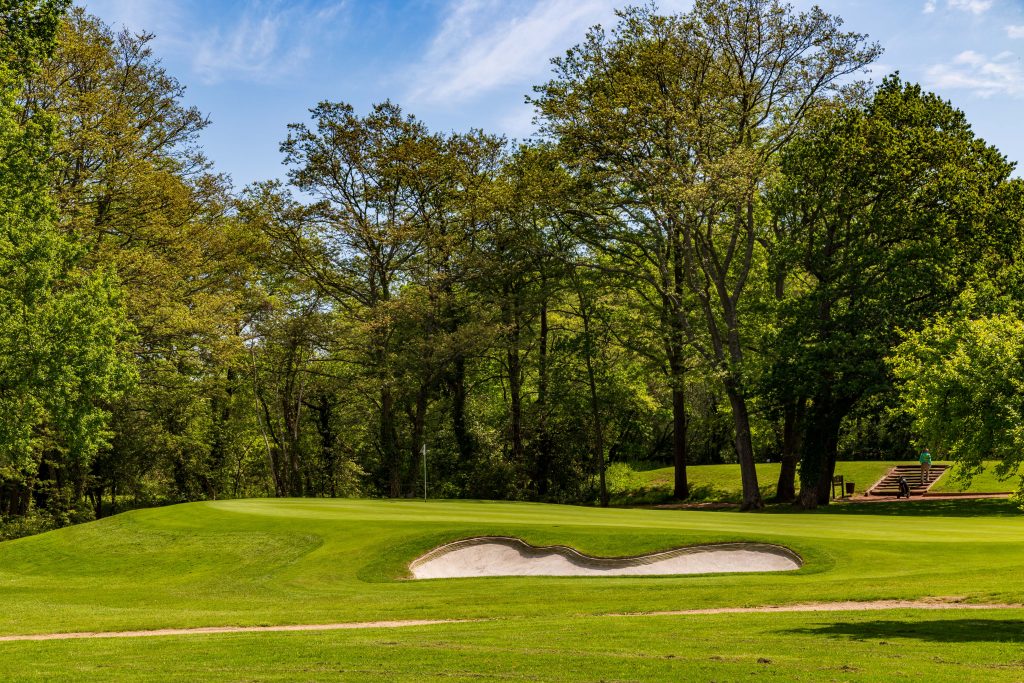
Looking back, who are those who have helped you and who has had the biggest influence on where you are in your career today?
I think for me it started with my father’s quote “what you put in is what you will get out”. I have always followed this mindset and tried to get my head down and work hard from a young age to achieve my goals.
In the early years at Brook when I used to spend about £1,000 a year with Rigby Taylor, Derek Cunliffe would regularly come down to the cricket club. It was usually me panicking about some disease or what to do about weeds on the square and he would reassure me and talk me through the best course of action. This was never about selling me anything, it was about helping a young man find his way in the industry and something I will forever be grateful for. This industry is full of good people that will offer advice without judgment as we all know how tough it can be. I have been helped by various people and some have even created opportunities to get me to where I am today.
What do you think are the qualities now needed to meet the requirements and demands of golfers by someone in your position and how does this help contribute to the business of golf?
Passion, resilience and belief in what you do are essential in dealing with the pressures of golf. The weather is a huge factor in our job and the expectations do seem to increase year on year. I try not to take good or bad comments to heart too much, if I can honestly say I am doing my best with what I have then I am happy. I have found myself many times sitting in the sun with my family, everybody is enjoying the nice weather and all I can think about is the fairways burning off or the seed won’t germinate in these conditions! It’s very hard to just turn that off and to be honest I think it may take a few more years to be able to do so.
What currently gives you the greatest satisfaction from your job and what do you feel are your biggest achievements to date?
The greatest satisfaction has been building the team I have. I really enjoy the team environment of the job. Preparing for big tournaments and completing big projects as a team is the best feeling you get. I enjoy helping and developing people to achieve their goals in work and life. Walking round the course on a sunny day when everything looks great are some of the best moments in our job.
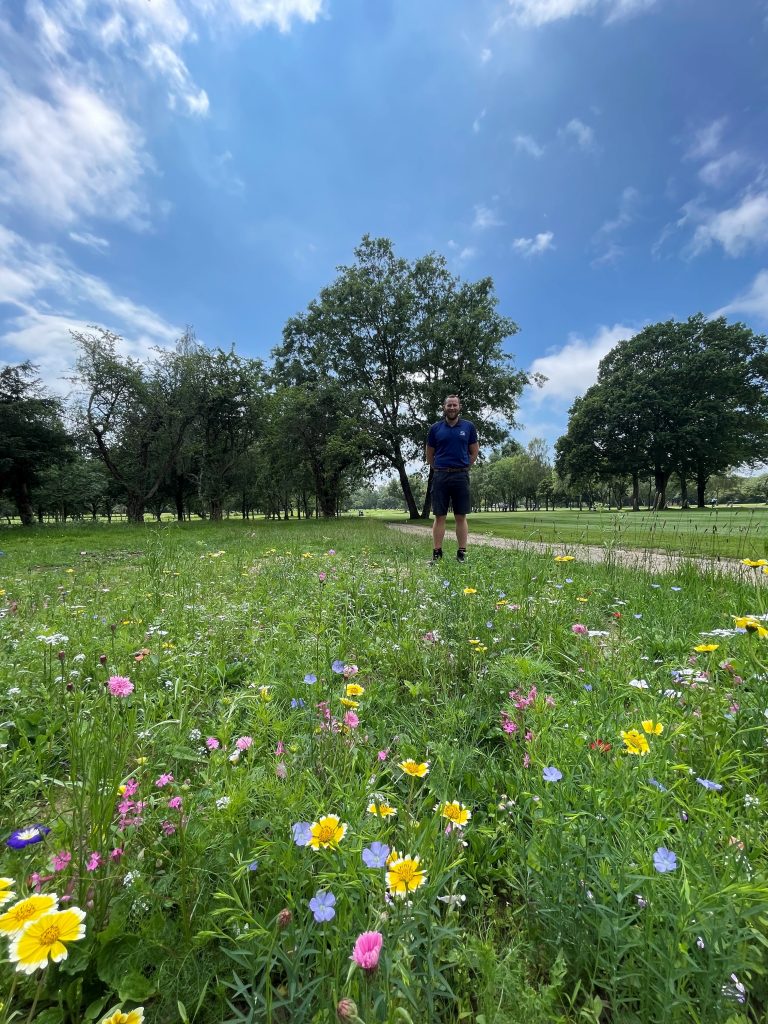
What advice would you give to youngsters starting out and wanting to pursue a career in the profession?
I would say get your college courses done as soon as you can. Reach out to industry people and ask questions. There is so much information online and on Facebook groups that you can learn something new every day, even if you are an experienced course manager. You can volunteer for tournament experience and sign yourself up for seminars. Having a clear vision of where you want to get to, like running golf courses, allows you to plot through the early years better. Ask yourself questions like where do I want to be in five or 10 years’ time.
What changes do you think need to be made to benefit the industry sector and profession of the greenkeeper?
I think educating the general golfer is a big part; the climate seems to be changing and more and more chemicals are coming off the market. It’s getting harder to produce the surfaces that are required as a result and creating a better understanding among golfers is critical for the future of our courses.
I think that promoting greenkeeping as a career choice would be a great way of getting young people involved. It’s far more in-depth than most realise, and the job could literally take you all over the world. It’s a great base of multiple skills that could be transferred to a lot of industries and I think turf care could really benefit. That being said, the pay across the board for greenkeepers / groundsmen needs to be raised so it becomes a viable option. I have seen many good greenkeepers leave the industry because in many circumstances the pay isn’t where it needs to be for experienced staff.

























